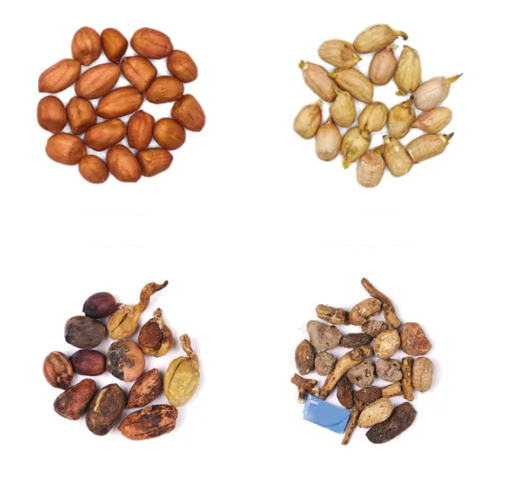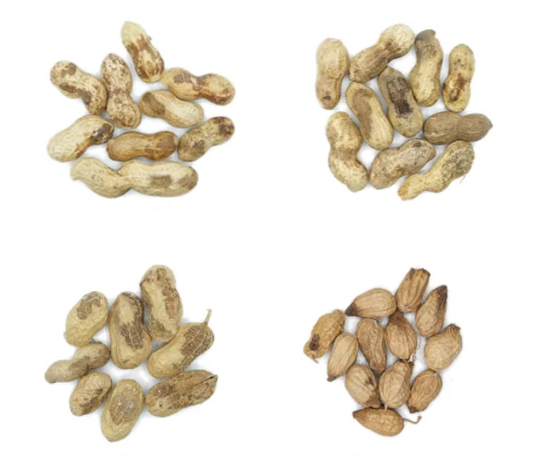Peanuts that are plump and visually appealing are far more likely to entice buyers. Conversely, defective peanuts such as incomplete or mouldy ones not only lower the product's appeal but may also pose a threat to health and safety. Therefore, efficiently and accurately removing these defective peanuts has become a significant challenge in the peanut processing industry.

By understanding customer needs and continually innovating, we have made groundbreaking progress in peanut sorting technology, offering more comprehensive sorting solutions to meet the diverse processing demands of the market.
Although peanuts with cracks, holes, or breaks do not affect the quality of the nut itself, their appearance does lower their perceived value, making it difficult to command a good price. Many peanut processing plants have added a crack machine to their production lines, mixing iron filings into the cracks through stirring, and then using electromagnetic devices to remove them. This increases operational costs and introduces the risk of iron filings and other impurities entering the final product.

To meet our customers' needs, we decided to empower the industry's development with cutting-edge AI deep learning technology. Given the diverse shapes of peanuts, a large amount of data labelling and significant computational resources are required to drive the process. However, we have long understood the trends in pattern recognition and artificial intelligence, and, based on years of data accumulation, we have established the industry's first large-scale sample and model libraries.
As early as 2016, our peanut sorting machine were equipped with internet service functionality, with tens of thousands of globally connected devices generating massive amounts of sample data daily, enabling rapid iteration of deep learning models for our peanut sortex machine.
With this wealth of technical resources, we quickly developed a crack sorting solution, allowing our customers to dispense with crack machines, thereby saving on equipment and maintenance costs, reducing processing steps, and improving efficiency.
In addition to cracks, our new generation of groundnut sortex machine can also sort peanuts with localised mould issues caused by moisture, such as black tips or damp spots. In recent years, extreme weather conditions have led to the emergence of issues like frozen kernels and sprouted kernels, which have become key factors affecting peanut quality and price. Due to the limitations in recognition accuracy, many peanut optical sorting machines on the market are unable to effectively sort these defects, forcing processing plants to carry out manual re-sorting after the colour sorter, which is both inefficient and ineffective.
Our new generation of products is equipped with the UHD2.0 high-definition, high-performance deep learning system, effectively solving this long-standing industry problem. Utilising ultra-clear imaging technology, the resolution has been increased fourfold, enabling even the smallest 1mm sprouts, invisible to the naked eye, to be identified.
"Previously, we had to hire 10 people solely for re-sorting. Now, we just need one person to occasionally check the results," said Mr. Wang, a major processor in a key peanut-producing region. "Compared to other colour sorters on the market, our results are outstanding. It's like taking an exam—simple questions won't differentiate the top students, but as the difficulty increases, the real experts become apparent!"
In recent years, we have leveraged our strong technical foundation to improve chip circuit structures, enhance chip manufacturing processes, and boost computing power. Simultaneously, we have explored the optimal equipment structure for peanut processing, transitioning from channel machines to belt machines and from traditional algorithms to AI deep learning systems. Each update has led to improvements in both output and sorting effectiveness.
The effectiveness of our peanuts sorting process is well-regarded. As one peanut processing plant owner put it, "If you grab a handful of waste, you won’t find a single good peanut in it. We've truly achieved a balance between output, sorting accuracy, and waste reduction."